Last Updated on April 23, 2023
The Scottish Terrier is one of the most recognizable dog breeds, thanks to its distinctive beard and skirt.
Known by other names such as Scottie, Aberdeen Terrier, and Scotsman, this breed’s stubborn nature also earned it the nickname “Diehard.”

This terrier breed may have a small stature, but it has a large heart and plenty of courage. Let’s get a deeper look at the independent Scottie below.
Quick Navigation
- 1 Where did the Scottish Terrier originate?
- 2 Appearance: What does a Scottish Terrier look like?
- 3 Temperament: Do Scottish Terriers make good family pets?
- 4 Taking Care of Your Scottish Terrier
- 5 What kind of health problems do Scottish Terriers have?
- 6 How much do Scottish Terrier puppies cost?
- 7 Curious about Scottish Terrier mixes?
- 8 Who should get a Scottish Terrier?
- 9 Reference
Where did the Scottish Terrier originate?
You may have guessed it by its name. This breed originated from Scotland.
During Rome’s invasion of Britain in 55 B.C, Pliny the Elder described his surprise at seeing small dogs following their quarry to the ground.
The Romans referred to these dogs as terrari, meaning ‘workers of the earth.’
Terrari is a suitable description as the Scottish Terrier is a determined hunting breed. They were bred to hunt foxes, badgers, and vermin living in dens across the Scottish Highlands.
The confusion about this terrier’s origins stems from how Scottish terrier breeds were classified. There was a custom where people called all terriers originating in Scotland as Scottish or Scotch Terriers.
The matter became more complicated when people separated Scotland’s terriers into two groups: the Dandie Dinmont Terriers and the Skye Terriers.
There became a mix between Scottish Terrier and Skye Terriers, an extensive collection of terriers originating from the “Isle of Skye.”
In the 1870s, the breeders released a detailed description of the right Scottish Terrier dog breed.
They put the modern breed standard forward around 1880 and formed the first Scottish Terrier Club in Scotland in 1882.
By the end of the 1800s, breeders further divided the Skye terriers into four different terrier breeds:
- Skye Terrier
- Cairn Terrier
- West Highland White Terrier (Scottish Highland Terrier)
- Scottish Terrier
Of the many short-legged, hard-coated terriers in Scotland, the Scottish Terrier became a favorite in Aberdeen, Scotland. That led to their other name, the Aberdeen Terrier.
In the 19th century, another nickname for the Scottie arose. The fourth Earl of Dumbarton, George, had a famous pack of Scotties. Because of their rugged nature and endless determination, they earned the nickname “Diehards.”
In 1883, the first Scotties – Tam Glen and Bonnie Belle – went to America with John Naylor. Naylor showed these dogs and imported more of the breed to the United States.
The American Kennel Club (AKC) registered its first Scottish Terrier, Prince Charlie, in 1885. The dog breed gained popularity, and their fame soared after World War II.
Similar to the Irish Setter, US Presidents also favored the Scottie. President Franklin D. Roosevelt’s terrier, Fala, was his loyal companion.
Former President George W. Bush also had a female called Miss Beazley and a male called Barney at the White House.
Appearance: What does a Scottish Terrier look like?
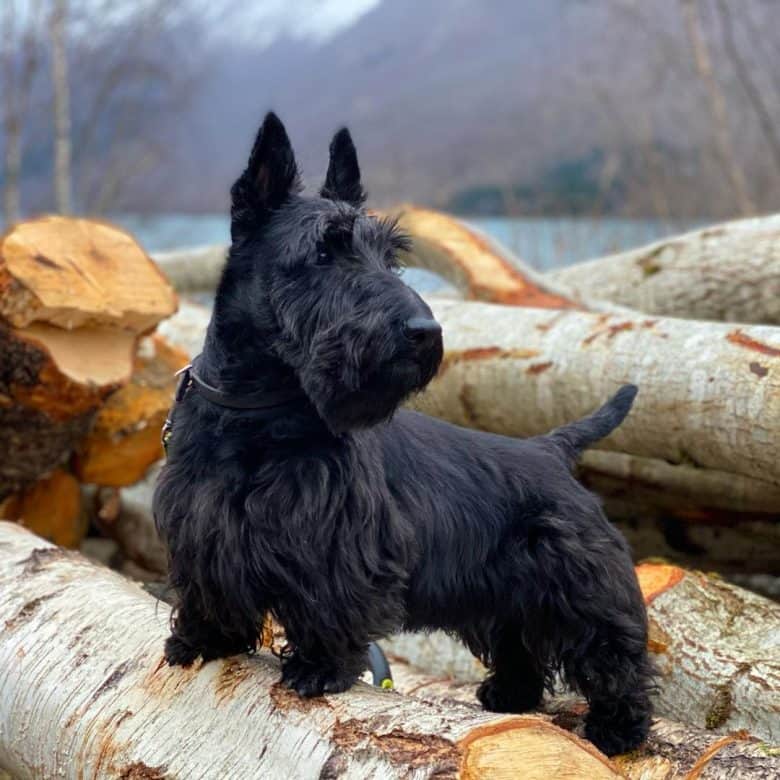
The Scottish Terrier looks like a small hairy Scotsman with a beard and kilt. This stature gives it the impression of power in a small package.
The terrier has a rough, wiry coat with a noticeable fringe of hair along the underside of its belly, front of its legs, and sides. We’ll go in-depth into the fur and its markings later.
The head is long compared to the rest of the dog. The domed skull shape is medium-sized, and its eyes are small, almond-shaped, and set apart on the head.
Eye colors range from dark brown to nearly black, and the nose should be black.
The Scottie’s muzzle is long, medium-sized, and tapers towards the nose. Its ears are pointed and stand erect atop the head.
How big does a Scottish Terrier get?
A Scottish Terrier’s height is roughly the same for male and female adults. Both reach a height of about 10 inches (25 cm) when they reach maturity between 12 to 14 months.
A healthy male weighs between 19 and 22 pounds (9 and 10 kg), while a female is between 18 and 21 pounds (8 and 10 kg).
That makes Scotties adaptable to all kinds of living conditions, including apartments, provided they get their daily walk.
Now, because of their adorable size, you may wonder if there are miniature Scotties. There’s none.
But if you’re looking for a smaller Scottish Terrier-like dog, you can check the Fox Terrier Cross or go for its hybrid, which we will discuss in the latter part of this article.
Miniature Schnauzer VS. Scottish Terrier
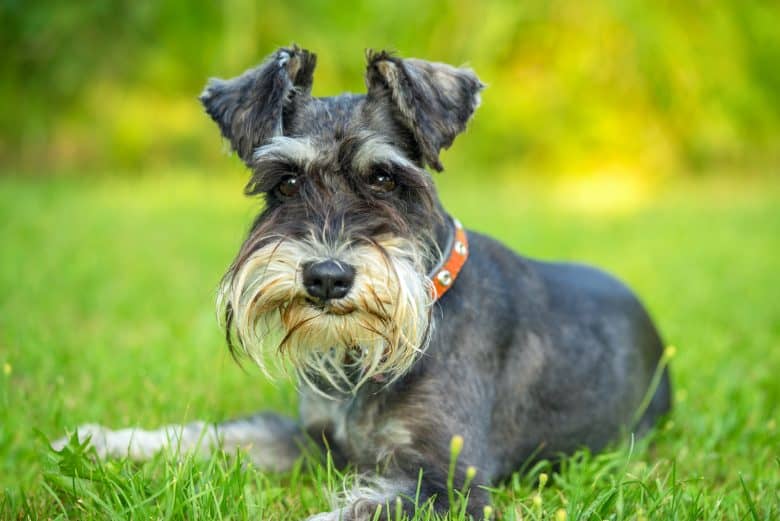
The Miniature Schnauzer and Scottish Terrier may have similarities in appearance, but they aren’t related, and they’re different breeds.
Miniature Schnauzers tend to weigh less, ranging between 11 and 20 pounds (5 and 9 kg). They both have wiry coats, but the Schnauzers have grey coloring, which Scotties don’t.
These two breeds also differ slightly in temperament. Schnauzers get on better with kids and are more tolerant of other animals, like cats. Schnauzers are also easier to train as they are less willful.
Even their origins are different. Standard Schnauzers originated from Germany, and the AKC categorized Schnauzers into the Working Group and Scotties into the Terrier Group.
North America classifies Miniature Schnauzers into the terrier group because of their rat-catching abilities. But, they do not share an ancestral family with Great Britain terriers.
If you need help choosing between a Miniature Schnauzer and a Scottish Terrier, take a look at this video.
What’s unique about the Scottish Terrier’s coat?
The Scottie dog breed has a double coat made of a wiry outer coat and a softer, dense undercoat. This weather-resistant coat protects them from bad weather conditions.
Pure black Scottish Terriers are the traditional archetype, but they come in various colors and brindle markings.
These markings include black, black brindle, red brindle, silver brindle, wheaten, grey or steel, black with some white markings, and brown.
A brindle Scottish Terrier can come in any color so long as they have black stripes. There are no Scotties that are pure white, but their pale tan coloring is similar to those with wheaten color.
And while we’re on that topic, the West Highland Terrier is a different breed.
Temperament: Do Scottish Terriers make good family pets?
Yes, the Scottish Terrier’s personality is fitting for a family. It enjoys companionship, showing gentle affection to children, and consideration to seniors. They treat people well who treat them right – mutual respect applies.
Although they adore children, they’re not an excellent match for families with babies and small children. Scotties will assert themselves when prodded, so nipping and biting can be expected.
These dogs are not inherently mean, though. They’re feisty, stubborn, loyal, and sometimes aloof, but not vindictive. Many see the Scottie as a big dog in a small package, with plenty of heart and bravery.
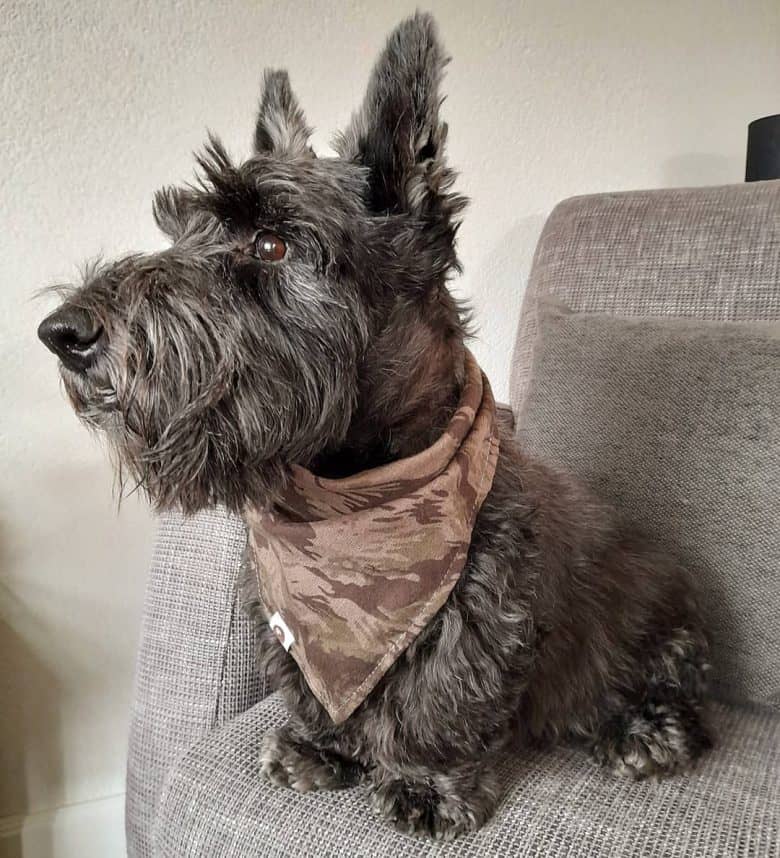
This terrier doesn’t take to strangers as quickly as other breeds, but they love being a part of a family unit and will protect them.
Take heed though, Scotties like to have their own space and me-time. They’re not lapdogs and will not appreciate too much cuddling.
Being friendly with family members is not a problem, but they can be aggressive to other dogs. For this reason, they need to socialize with other pets from an early age.
They also have a strong prey drive, thanks to their hunting heritage. This behavior can be problematic if you have hamsters, small animals, or cats at home.
Can a Scottish Terrier be left alone?
The Scotsman is independent and can tolerate time on their own. But like many dogs, if they get bored, they may engage in destructive behavior, like digging or chewing.
One of the things we love about the Scottie is they’re NOT yappy.
They have a deep and powerful bark, fantastic for startling potential intruders, though, which makes them excellent watchdogs as they conduct regular “patrols” of their territory, or house, and are alert.
Since you know your dog better, find out the best training method for your terrier while using positive reinforcement. Scottish Terrier’s sensitive nature means mistreatment or abuse devastates them.
But, you also need to be firm to address their stubbornness.
Crate training is beneficial and also feeds into Scottie’s need for their own space. This training will ensure they don’t have ‘wee’ accidents around the house.
And these are smart canines that respond well to challenges and will get bored with too much repetition. Try to change the training and commands where possible.
You can start with stimulating 15-minute sessions and work upwards.
Due to their den animal hunting instincts, the need to dig runs deep. You’ll need to conduct regular garden checks to make sure they aren’t exploring potential escape routes.
If you can create a designated digging area in your yard, this will keep you and your Scottie happy.
Scottish terriers can swim, but it’s not their most vital skill. Their short legs and solid bodies do not lend towards flotation. Supervision when near water is a MUST, and if you have a pool, make sure you have a cover.
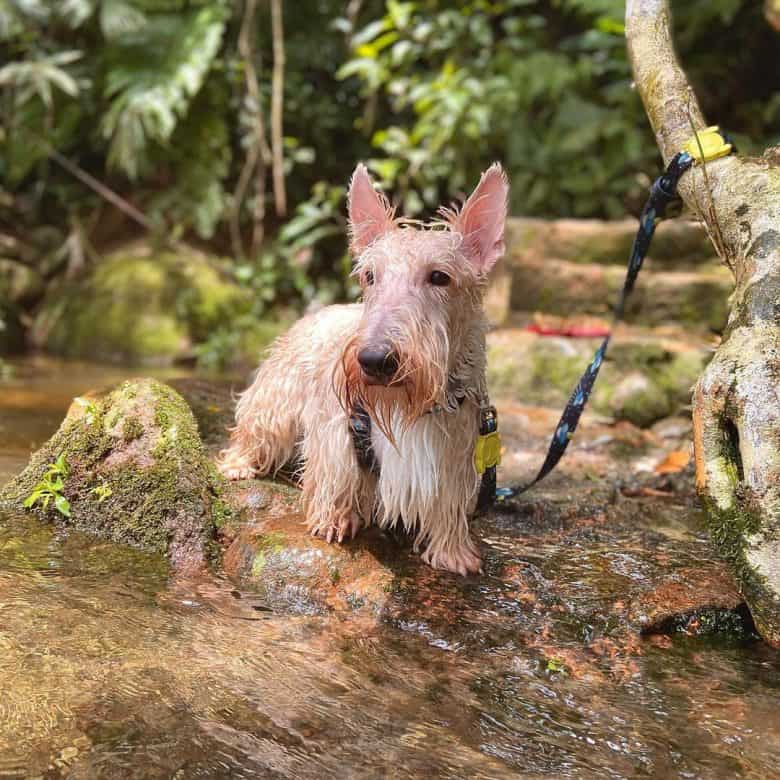
Taking Care of Your Scottish Terrier
They may be little dogs, but they need a lot of grooming attention, especially if they participate in dog shows.
Pay close attention to their coats, as well, because it protects these fidos from extreme weather conditions. They can tolerate hotter weather conditions, but it’s best to keep their coats shorter.
Your Scottish Terrier’s exercise needs
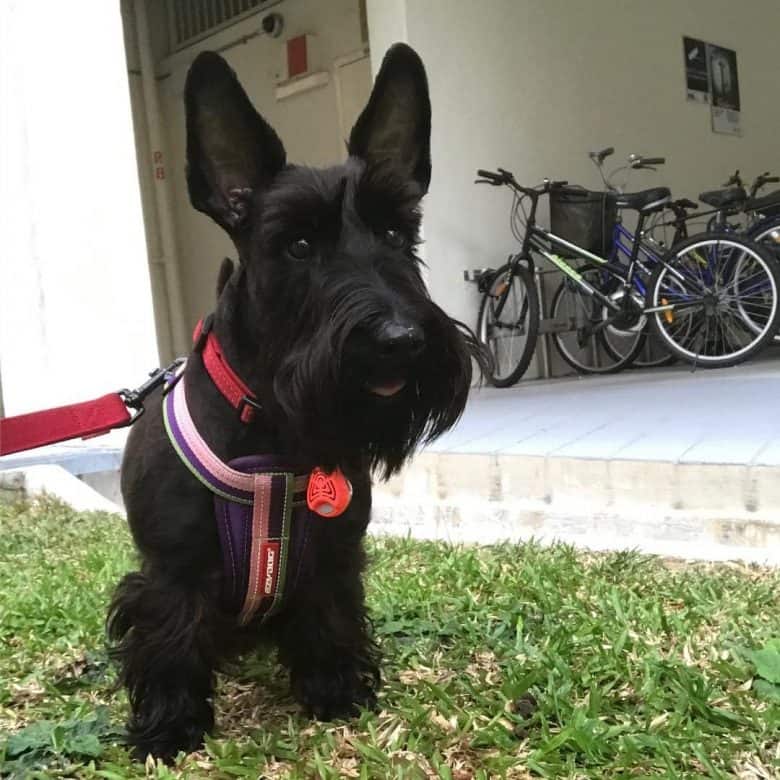
Scottish Terriers are moderately active dogs that require at least an hour of exercise daily. They may not be the best jogging buddies, but they do well in different canine sports like earthdog trials.
Scotties will show their “diehard” tendencies in a vicious match of tug of war. A game of fetch will also keep them happy. You can divide the hour into 20 and 40 minutes of activities or play. Romps around the garden also count.
Grooming: Do Scottish Terriers shed?
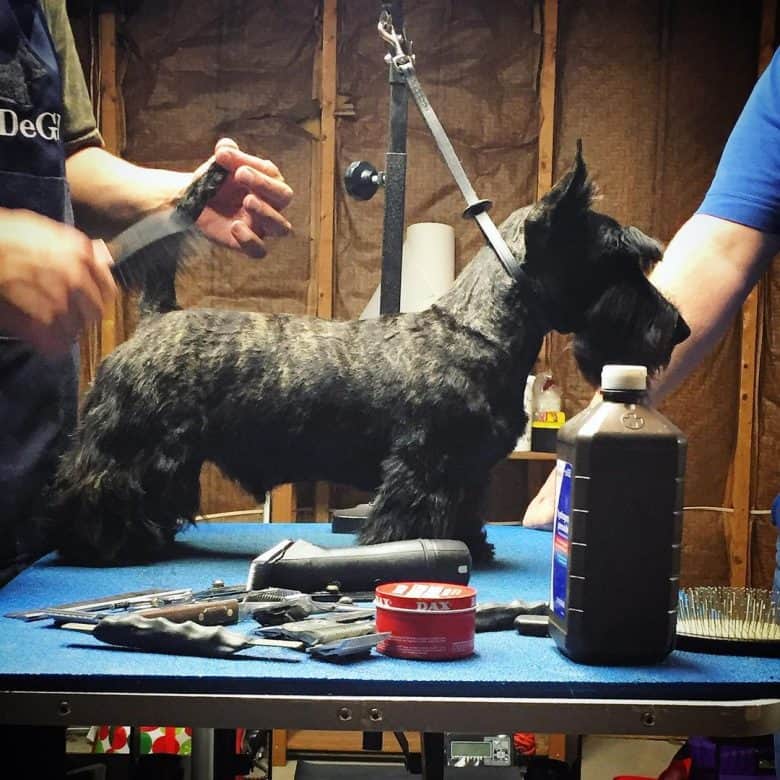
No, Scottish Terriers are low- to non-shedding canines and are considered hypoallergenic. A weekly grooming session is needed to keep that coat in tip-top shape.
You can also take her to the groomer every month or so for haircuts or the complete works.
Grooming this pooch can be challenging, especially if she’s often strutting in conformation events. Their coat style’s specificity and the double coat require the stripping technique.
Regular brushing with a stiff brush will do the trick. You can use a wide comb for your dog’s beard and some scissors for trimming the skirt. You can decide how short or long you want to keep the hair.
Like many terriers, the Scottie’s skin dries out quickly. They’re not smelly dogs and droolers, so they should only be given a bath when necessary.
For dental hygiene, brush your Scottie’s teeth between two and three times a week to prevent tartar and bacteria buildup.
Check their ears when grooming to ensure there is no wax or soreness. Clean the ears with an ear cleanser treatment to prevent infections.
What to feed a Scottish Terrier?

Canidae Life Stages Chicken & Rice Formula is an excellent choice for puppies and all your Scottie’s life stages.
For adults, Hill’s Science Diet Dry Dog Food, Adult, Small Paws for Small Breeds, Lamb Meal & Brown Rice Recipe provides balanced nutrition and supports bone strength.
Whether it’s raw, canned, or dry kibbles, all types of dog food have their pros and cons. Pet parents need to choose a high-quality food that’s suitable for their fur baby’s weight, age, activity level, and even health.
For the amount, 1 to ½ cup of food is generally recommended consumption for this dog breed.
Divide that into two meals a day. Scottish Terrier puppies should eat more frequently, like three to four times daily.
A healthy and shiny coat with no dryness or flaky skin indicates your dog eats suitable food.
Other breeders have found their dogs do well with moderate protein in their diet, supplemented with an additive like canned dog food.
What kind of health problems do Scottish Terriers have?
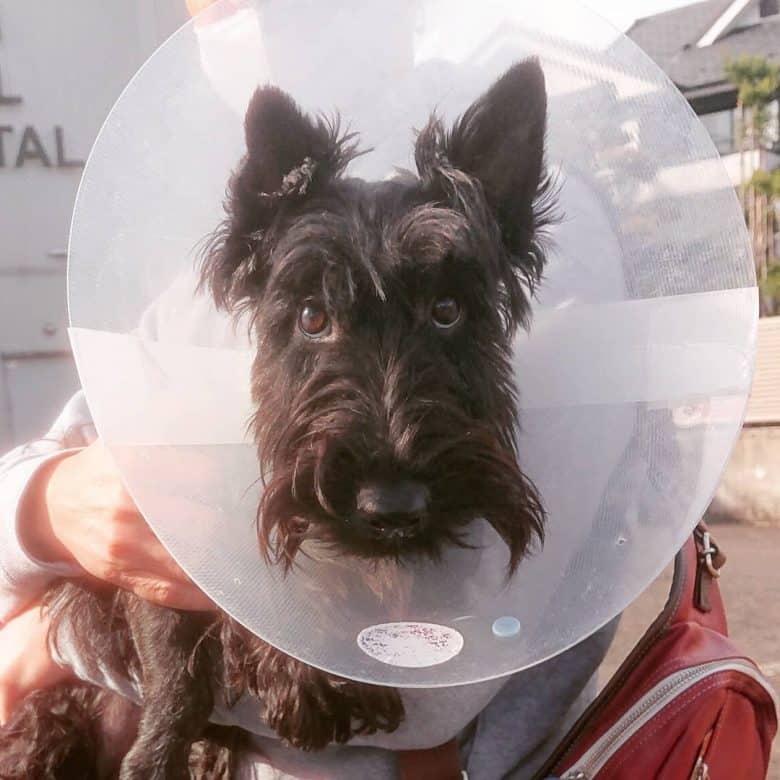
Scottish Terriers can struggle with eye problems, such as cataracts and Progressive Retinal Atrophy (PRA), which can result in blindness.
Scottie cramp is a disorder specific to this breed that makes your Scottie move in a goose-stepping fashion, with front legs moving sideways and their rear legs over flexing.
Your dog may experience it when stressed or overstimulated by exercise.
Other health conditions that may affect this dog breed are the following:
- Von Willebrand’s Disease (vWD Type 3)
- Craniomandibular Osteopathy (CMO)
- Patellar Luxation
- Bladder stones and cancer
- Common skin ailments
- Ligneous Membranitis
- Mast Cell Tumors
- Flea Allergy
- Cushing’s disease
- Hypothyroidism
- Deafness
Neurological problems can also affect Scotties, like brain cancer and cerebellar abiotrophy, also known as cerebellar degeneration.
This problem causes neurological symptoms, like abnormal gait, swaying, and muscle tremors, among others.
Scottish Terriers can be difficult ‘whelpers.’ It’s common for female Scotties to be unable to give birth naturally. Many mothers need a cesarean to deliver their pups due to abnormalities in the pelvis shape.
There are health tests to identify some of the health issues we mentioned. These include:
- Von Willebrand’s Disease DNA Test
- Orthopedic Foundation for Animals (OFA) test for Patella Evaluation
- OFA test for Thyroid Evaluation
- Canine Eye Registration Foundation eye examination
Cancer is a leading cause of death in elderly dogs. Although the Scottish Terrier has a life expectancy of 12 to 15 years, they can still get cancer nearing the end of their lifespan.
In 2019, the Scottish Terrier’s registrations dropped dangerously. The Kennel Club noted a 38% decline in Scottie puppy registrations. People feared they would go extinct.
In the first few months of 2020, puppy registrations increased by 92%, giving them a brighter future.
How much do Scottish Terrier puppies cost?
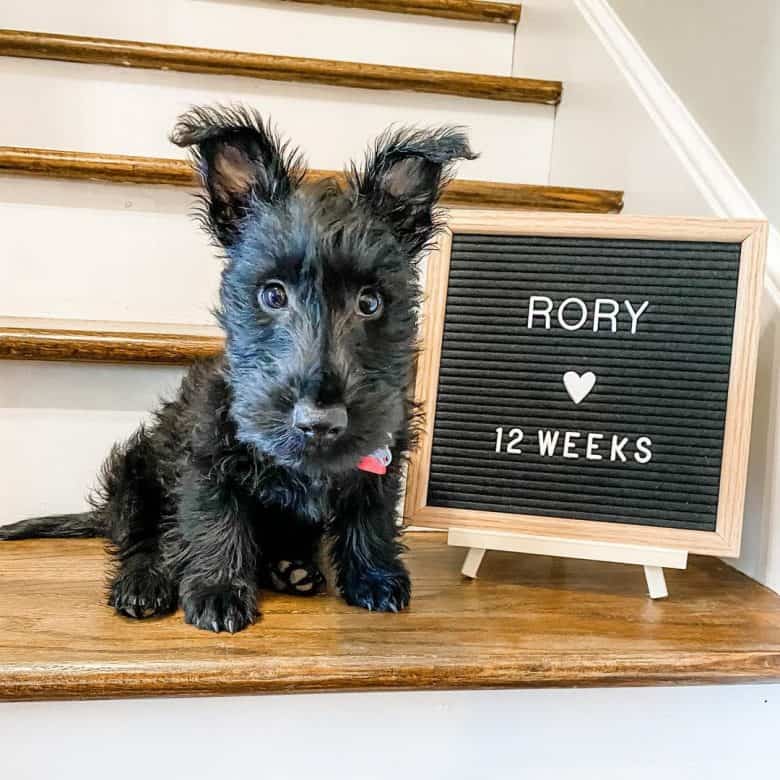
These terriers whelp between 1 and 6 puppies per litter, where each pup has a price range of $1,800 and $5,500.
The costs will be affected by factors like the kennel’s popularity, the availability of pups, the breeder’s location, shipping fees, etc.
And the expenses don’t stop there. We’d recommend budgeting for other expenses that can come from medical checkups, emergencies, food, vaccines, grooming, flea preventatives, toys, beds, treats, collars, and spaying/neutering.
Where to Find Scottish Terrier Breeders
Always make sure you choose reputable Scottish Terrier breeders so that you’ll end up with a healthy dog with the right temperament for your home. Try to avoid supporting unethical practices like puppy farms and pet stores.
The Scottish Terrier Club of America is a great resource to find breeders. The AKC Marketplace is also a highly recommended place to look for Scottish Terrier puppies for sale.
Adopt From a Scottish Terrier Rescue
If you want to see Scotties for adoption, take a look at the Scottish Terrier Club of America’s (STCA) list of rescue organizations for the breed.
Adopting an adult dog can be rewarding as you can easily see the dog’s temperament and personality.
Curious about Scottish Terrier mixes?
As such a recognizable and distinct breed, it’s not surprising several mixes have emerged. Let’s take a look at some of them.
Scottish Terrier Chihuahua mix
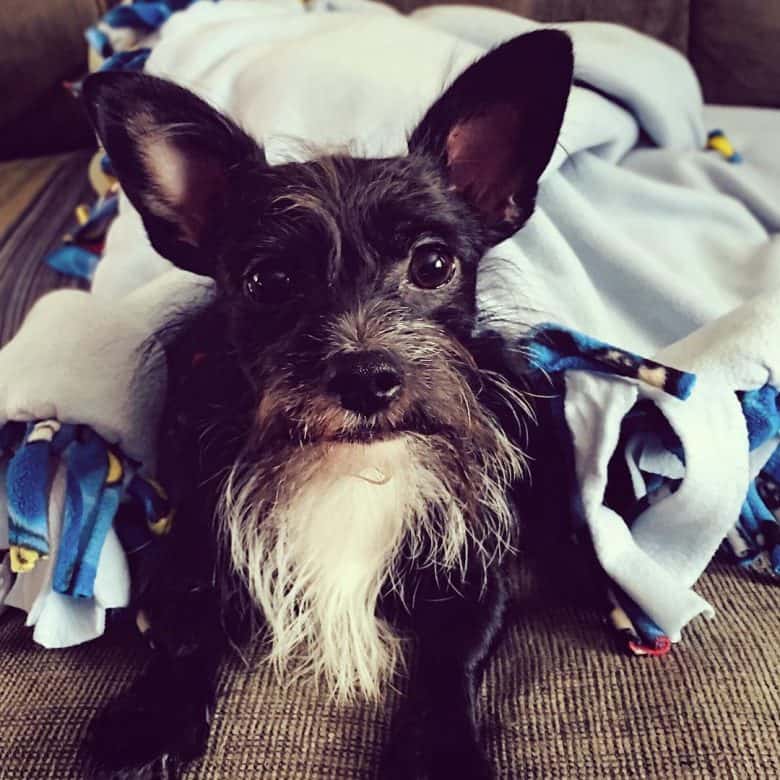
This designer dog combines the small body and cuteness of a Chihuahua with Scottie’s independence. It’s a spunky pup that’s endearingly called Scotchi or Scotchahua.
Scottish Terrier Schnauzer mix

Combining the German and Scottish heritage resulted in this clever and outgoing dog. Scottie Schnauzers are one of those hybrids that are just too cute!
Scottish Terrier Yorkie mix
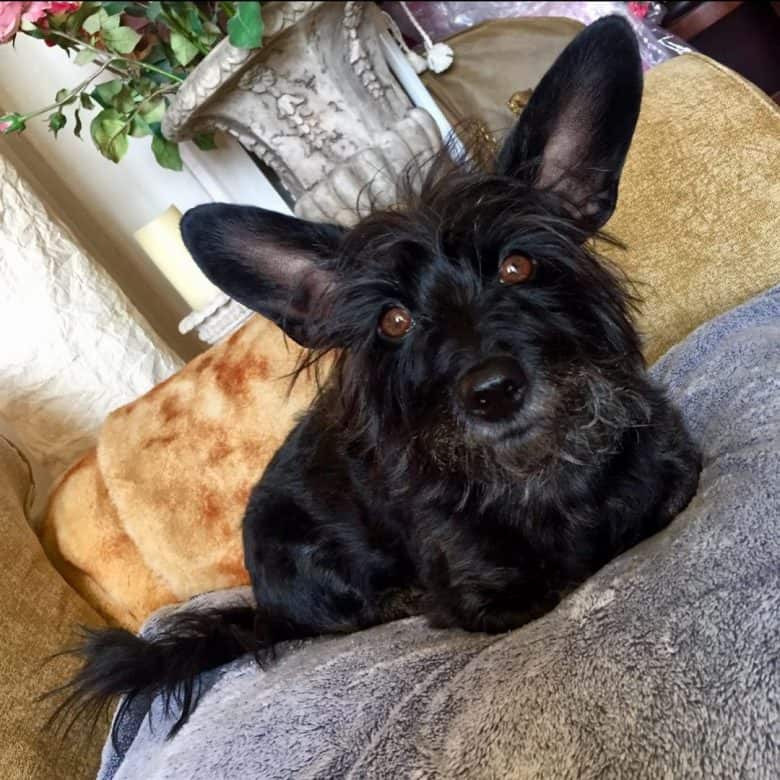
A Scorkie is a mix of a Scottie and a Yorkie that are great companions and fantastic watchdogs. They have a charming disposition that dog lovers will eat up.
Scottish Terrier Corgi mix
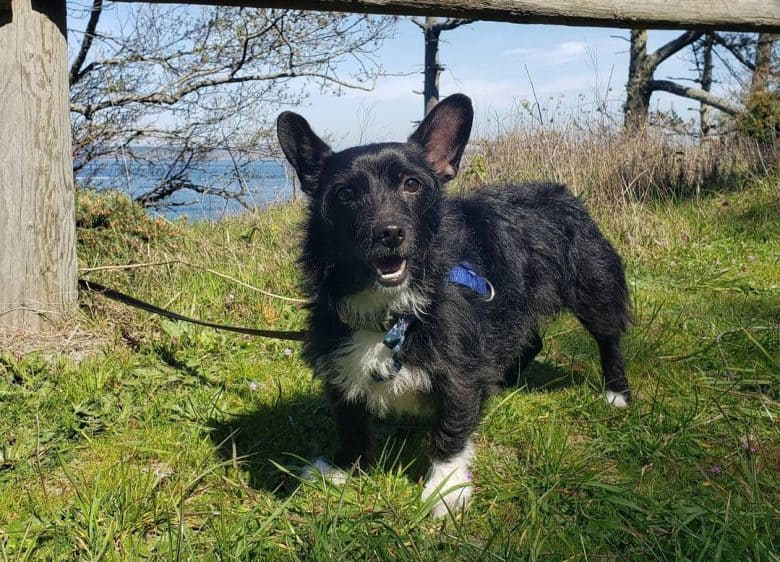
Last but not least, this cross gets the best of Scottie’s face and ears while keeping the cute Corgi body shape. A canine that gives us the best of both worlds from hardworking yet adorable doggos.
Who should get a Scottish Terrier?
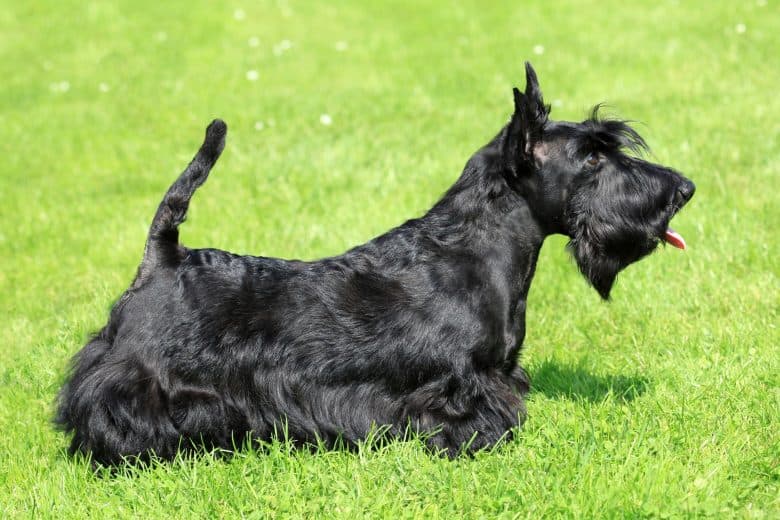
We’ve mentioned that Scotties have a moderate energy level, so they need owners who will have playtime daily or take them for regular walks.
They’re also intelligent dogs with a deep stubborn streak. That means they need a firm hand and someone the determined Diehard can’t boss around. Experienced owners may be a better match for the willful Scottie.
Scotties are a good fit for apartments and most living situations. They’re great family dogs, but you must take extra care of babies or small pets in the family.
This breed of dog can fall victim to several different health problems. So, it’s important to discuss your dog’s background with the breeder or rescue.
Please comment and share your stories about your diehard Scottish Terrier below.
Reference
- https://www.petmd.com/dog/conditions/cardiovascular/c_dg_von_willebrand_disease
- https://www.petmd.com/dog/conditions/mouth/c_dg_craniomandibular_osteopathy#:~:text=Craniomandibular%20osteopathy%20is%20a%20condition,breeds%20of%20dogs%20than%20others.
- https://www.petmd.com/dog/centers/nutrition/bladder-stones-in-dogs-what-are-the-signs-treament#:~:text=How%20are%20Bladder%20Stones%20Formed,urine%20viewed%20under%20the%20microscope.
- https://www.petmd.com/dog/centers/nutrition/evr_dg_common-dog-skin-problems
- https://www.akc.org/expert-advice/health/cushings-disease-in-dogs/
- https://www.petmd.com/dog/conditions/neurological/c_dg_cerebellar_degeneration_brain_disease_in_dogs
- https://vgl.ucdavis.edu/test/vwd-type-3
- https://www.ofa.org/diseases/other-diseases/patellar-luxation
- https://www.ofa.org/diseases/other-diseases/hypothyroidism
Cess is the Head of Content Writing at K9 Web and a passionate dog care expert with over 5 years of experience in the Pet Industry. With a background in animal science, dog training, and behavior consulting, her hands-on experience and extensive knowledge make her a trusted source for dog owners.
When not writing or leading the K9 Web content team, Cess can be found volunteering at local shelters and participating in dog-related events.
